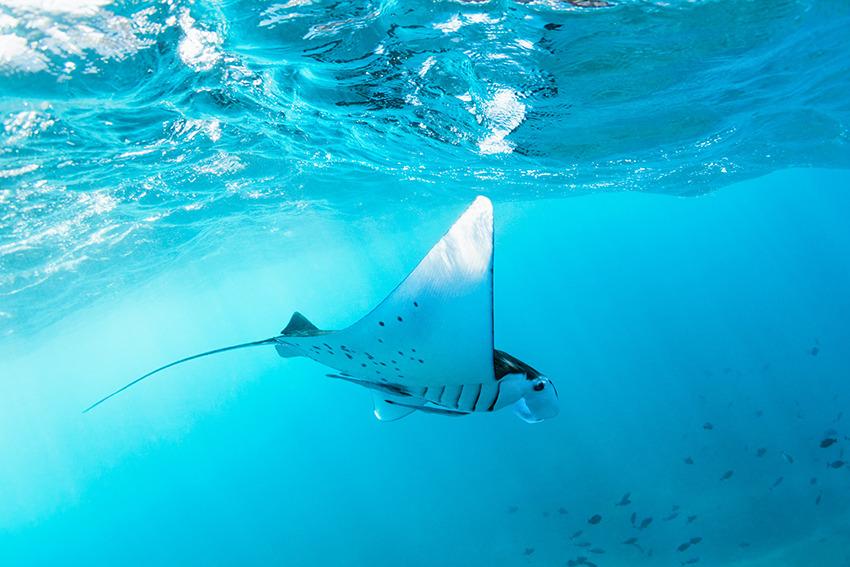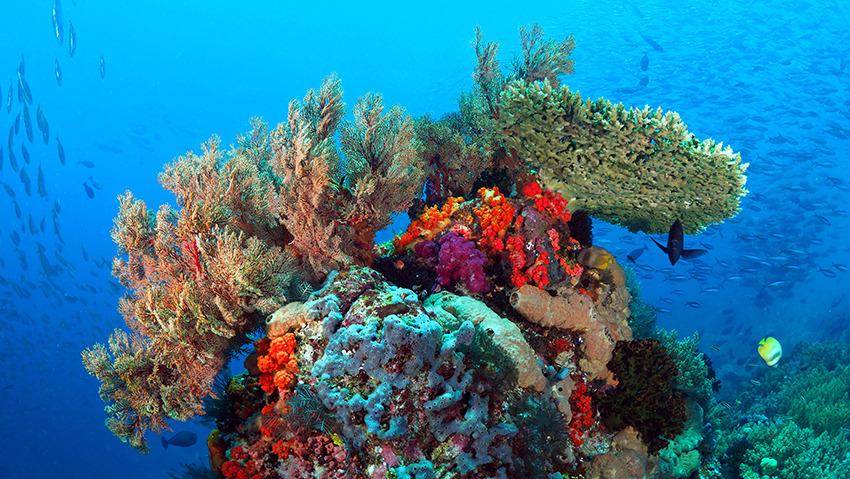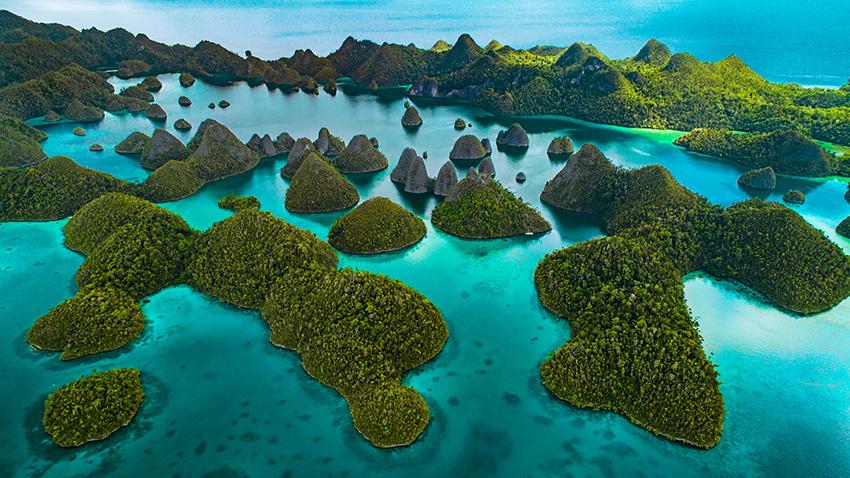Indonesia
Where to dive to see manta rays in Indonesia?
Did you know that Indonesia is one of the best diving destinations in the world to see manta rays? From Nusa Penida to Komodo via Raja Ampat, all you have to do is choose your destination to make this dream come true. One thing is certain, witnessing the graceful ballet of manta rays is an experience that will leave a lasting impression...
1. Nusa Penida near Bali

Are you traveling to Bali and want to dive with manta rays? Head to the island of Nusa Penida where you can dive at Manta Point, a diving site recognized worldwide for its impressive concentration of manta rays. Indeed, this diving spot is made up of cleaning stations, which explains why manta rays come there by the thousand every year.
The advantage? This dive site is accessible to all levels, from beginners to more experienced divers. In fact, the cleaning stations are located between 5 and 10 meters deep. You can even admire the manta rays while snorkeling or freediving!
Although manta rays are present there all year round, the best time to observe them (due to diving conditions) is from August to October. In addition to manta rays, the luckiest divers may be able to come across a rare and very impressive species of fish: the sunfish, also called Mola Mola (especially from July to October).
Good to know: to dive with the manta rays of Nusa Penida, you can go by boat directly from Bali or get closer by staying on Lembongan, an island neighboring Nusa Penida located just 30 minutes by boat from Bali.
2. Komodo National Park

Located between the islands of Sumbawa and Flores, Komodo Island is world famous for its unique residents: Komodo dragons. But that's not all ! Komodo is also renowned for being one of the best places in the world to dive with manta rays. And for good reason, the waters of Komodo being rich in plankton, the manta rays have made it a favorite place to feed.
Among the best diving spots for observing manta rays in Komodo, we can cite Manta Point where you can see white-tipped reef sharks, nason and small squills or even Manta Alley which is relatively shallow (between 10 and 20m). You can also come across them at the diving spot called Golden Passage.
For the best visibility and weather conditions, we recommend that you go diving with manta rays between the months of May and November.
Please note: Access to the island is only possible by diving cruise. Enough to fully enjoy this unforgettable moment, but also discover the many other diving sites in the marine park.
3. Raja Ampat

Located in the Indonesian province of West Papua, Raja Ampat is a destination that many divers dream of. And for good reason, the archipelago is one of the rare places in the world to still be preserved from mass tourism due to its distance from the other Indonesian islands. The archipelago is notably part of the Coral Triangle area which is home to the greatest maritime riches on the planet.
In addition to discovering an extraordinary variety of corals and fish, the waters of Raja Ampat are home to larger specimens including the famous manta rays. We can even observe 2 species there: reef manta rays and oceanic manta rays. Among the dive sites where you can see manta rays in Raja Ampat, we can cite Manta Ridge, Manta Sandy, Eagle Rock and Wayag Lagoon or even Blue Magic.
The best time to try to see manta rays in Raja Ampat is from October to May and more particularly from December to March. Near the island of Yeben, however, there is a place where Manta rays gather almost all year round (except in September).
Good to know: The journey to Raja Ampat is not easy, but it is what allows the archipelago to maintain preserved biodiversity. You have to take a plane to Sorong via Madano or Makassar and then take a boat from Sorong. In addition, you must have a special residence permit from the government to go there as well as an entry permit to dive in the national park (The money collected is intended for the conservation of the national park).
Reminder of the rules of good behavior for diving with manta rays
As with any other wildlife, it is important to behave respectfully if diving with manta rays so as not to disturb or frighten them. Here are the best practices to follow:
-
Never touch manta rays
-
Never feed them
-
Do not approach, pursue or prevent their passage
-
Be as still as possible and let the manta rays approach while remaining calm
-
Keep distances of at least 3 meters
-
Do not swim above the cleaning station, but stay low to the bottom, taking care not to damage the corals
-
Do not use the flash of cameras
-
Listen carefully to the dive briefing and follow the instructor

